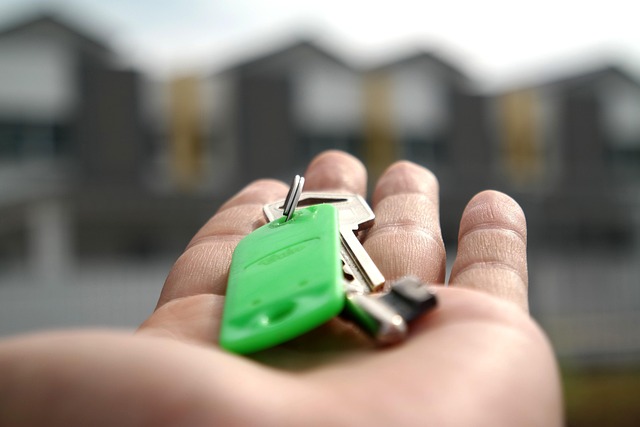Guide to Apartments for Rent: Finding Your Perfect Home
Renting an apartment involves understanding various housing options, researching neighborhoods, evaluating important factors, and preparing for your move. Whether you're a first-time renter or experienced tenant, knowing how to navigate the rental market effectively can help you secure suitable housing that meets your needs and budget while avoiding common pitfalls.

Different Types of Apartments Available for Rent
The rental market offers diverse apartment styles to accommodate various lifestyles and budgets. Studio apartments combine living, sleeping, and kitchen areas into one open space, making them ideal for single occupants or couples seeking affordable housing. One-bedroom apartments provide separate sleeping quarters, offering more privacy and defined living spaces.
Multi-bedroom apartments range from two to four bedrooms or more, suitable for families, roommates, or individuals requiring extra space for home offices or storage. Loft apartments feature high ceilings, open floor plans, and industrial design elements, often located in converted commercial buildings. Luxury apartments include premium amenities like concierge services, fitness centers, rooftop terraces, and high-end appliances.
Garden apartments typically occupy lower floors with direct outdoor access, while high-rise apartments offer elevated views and modern building amenities. Furnished apartments come equipped with essential furniture and household items, perfect for temporary stays or those avoiding furniture purchases.
Tips for Finding Apartments in Preferred Neighborhoods
Successful apartment hunting begins with thorough neighborhood research. Start by identifying areas that align with your lifestyle preferences, commute requirements, and budget constraints. Use online mapping tools to explore neighborhoods virtually, examining proximity to work, schools, public transportation, shopping centers, and recreational facilities.
Visit potential neighborhoods at different times of day and week to observe traffic patterns, noise levels, safety conditions, and community atmosphere. Walk or drive through residential streets, noting property maintenance, parking availability, and general neighborhood character.
Connect with local residents through community forums, social media groups, or neighborhood associations to gain insider perspectives about living conditions, upcoming developments, and area-specific considerations. Research crime statistics, school ratings, and future development plans that might affect property values or quality of life.
Consider factors like grocery store accessibility, healthcare facilities, entertainment options, and public services availability. Evaluate transportation options including public transit routes, bike lanes, and highway access for commuting convenience.
Key Factors to Consider When Renting an Apartment
Several critical factors determine rental suitability beyond basic appearance. Budget considerations should encompass monthly rent, security deposits, utilities, parking fees, pet deposits, and potential rent increases. Generally, housing costs should not exceed 30% of gross monthly income to maintain financial stability.
Location factors include commute time and costs, neighborhood safety, proximity to essential services, and future area development plans. Evaluate apartment features like square footage, storage space, natural light, appliance conditions, heating and cooling systems, and internet connectivity options.
Building amenities might include laundry facilities, fitness centers, swimming pools, parking availability, security systems, and maintenance services. Review lease terms carefully, noting lease duration, renewal options, pet policies, subletting restrictions, and early termination clauses.
Inspect the property thoroughly for maintenance issues, safety concerns, and overall condition. Document existing damages with photos and written descriptions to avoid security deposit disputes later.
Tips for Moving In and Setting Up a Rental Apartment
Successful apartment setup begins before moving day. Create detailed moving timelines including utility transfers, address changes, and service provider notifications. Schedule utility connections for electricity, gas, water, internet, and cable services to begin on your move-in date.
Conduct a comprehensive move-in inspection with your landlord, documenting the apartment’s condition with photos and written notes. Test all appliances, plumbing fixtures, electrical outlets, heating and cooling systems, and security features. Report any issues immediately to establish baseline conditions.
Organize essential items for immediate access during the first few days, including cleaning supplies, basic tools, toiletries, medications, important documents, and several days’ worth of clothing. Pack a first-day survival kit with snacks, water, phone chargers, and basic household necessities.
Plan furniture placement and room layouts before moving to streamline the setup process. Measure doorways, hallways, and rooms to ensure furniture fits properly. Consider hiring professional movers for heavy items or if you lack adequate help from friends and family.
| Apartment Type | Average Monthly Cost | Typical Square Footage |
|---|---|---|
| Studio Apartment | $800 - $2,500 | 300-600 sq ft |
| One Bedroom | $1,000 - $3,500 | 500-900 sq ft |
| Two Bedroom | $1,400 - $4,500 | 800-1,200 sq ft |
| Three Bedroom | $1,800 - $6,000 | 1,000-1,500 sq ft |
| Luxury Apartments | $2,500 - $8,000+ | Varies widely |
Prices, rates, or cost estimates mentioned in this article are based on the latest available information but may change over time. Independent research is advised before making financial decisions.
Establish relationships with building management and neighbors early to create a positive living environment. Keep important contact information readily available, including landlord details, emergency maintenance numbers, and building management contacts. Take time to familiarize yourself with building rules, amenities, and local services to maximize your rental experience.
Successful apartment renting requires thorough research, careful evaluation, and proper preparation. Understanding available apartment types helps narrow your search, while neighborhood research ensures location satisfaction. Evaluating key rental factors protects your interests, and proper move-in preparation facilitates smooth transitions. Taking time to address each aspect systematically increases your chances of finding and maintaining suitable rental housing that enhances your quality of life.




